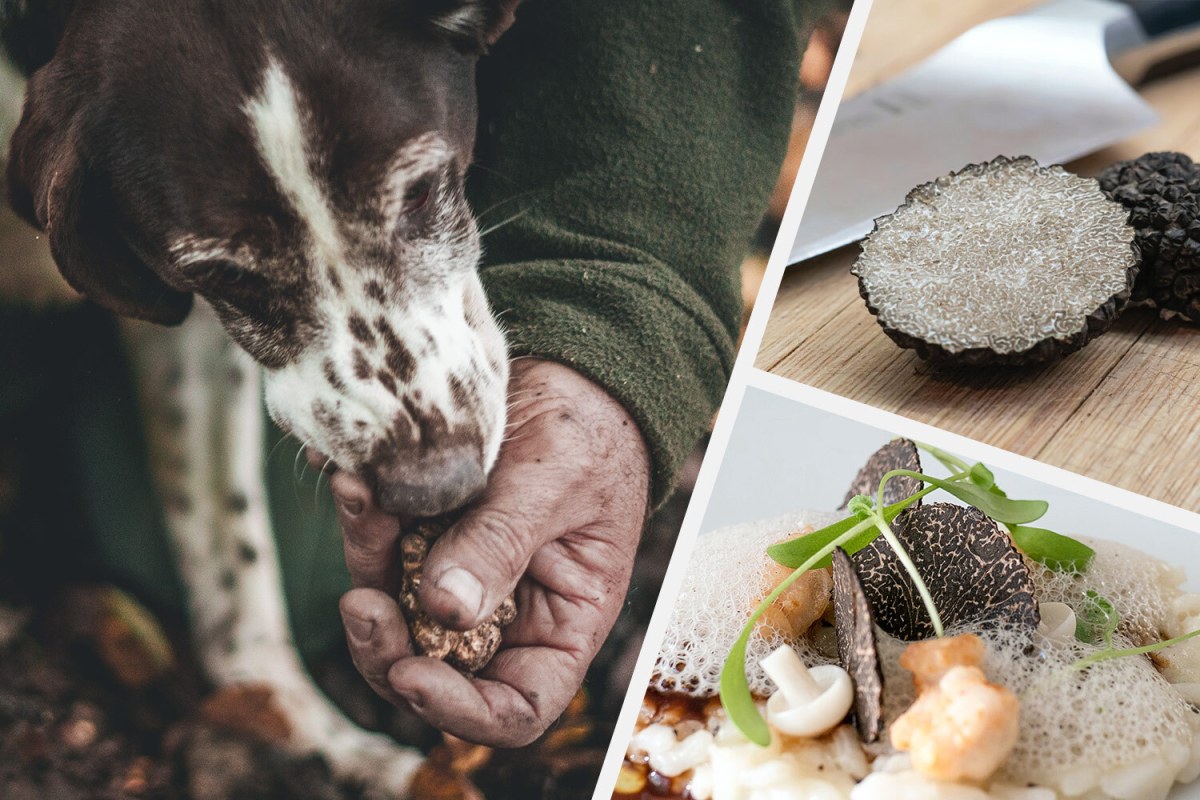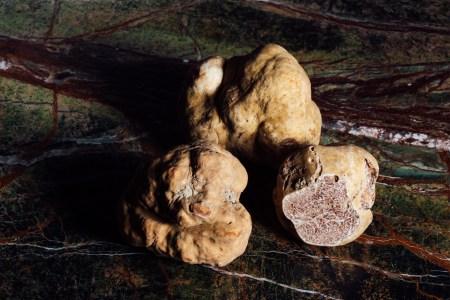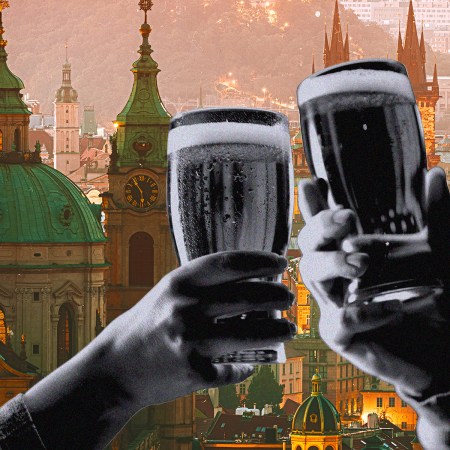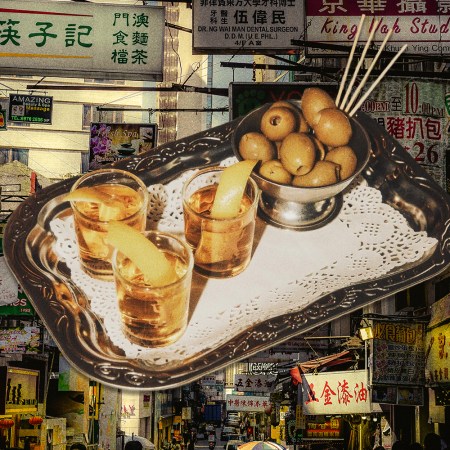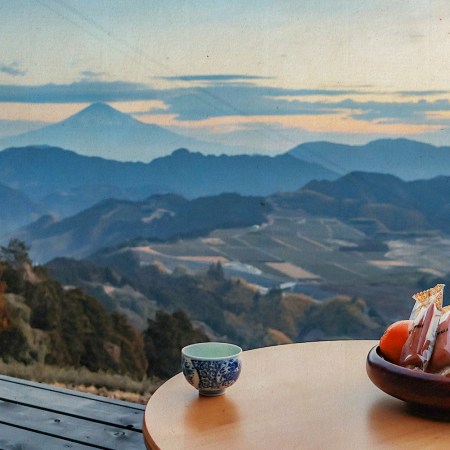Trekking through the woods in the Piedmont region of northern Italy, I watch as Bianca, a small, curly white dog, zigzags down a dirt path, nose to the ground in full concentration. Her owner Daniele Stroppiana isn’t far behind, watching as she darts off trail through brambles and dried leaves that cover the forest floor. Soon, her nose takes her up a small hill, where she begins digging at the dirt. Daniele kneels beside her as she digs, encouraging her as dirt flies. Observing the spot she’s digging, Daniele suddenly nudges Bianca out of the way to examine the dirt.
“Eccola! (There it is!) She scratched it a little bit with her paw,” he says in a mix of Italian and English. He pulls a small tool from his bag and begins gently carving the dirt away from a sphere-shaped object, like how a paleontologist works around fossil findings. After a dark little dome is exposed, he gently unearths it into his palm for us to see: a black truffle that earns Bianca a treat.
Here, in between vineyards and mountains, we are truffle hunting in the forest, where black and white truffles grow beneath the trees hidden under roots and deep beneath the ground. This region of Italy — specifically the Langhe area in the province of Cuneo and the town of Alba, just 30 minutes away — is known as the truffle capital of the world. Truffle hunting and extraction in Italy is in fact officially on the UNESCO list of Intangible Cultural Heritage as of 2021, and here, trifulau (truffle hunters) find coveted truffles that they sell for a premium. Truffle hunting is possible almost year-round, except for the month of May and September 1-20, when harvesting truffles is forbidden by law.
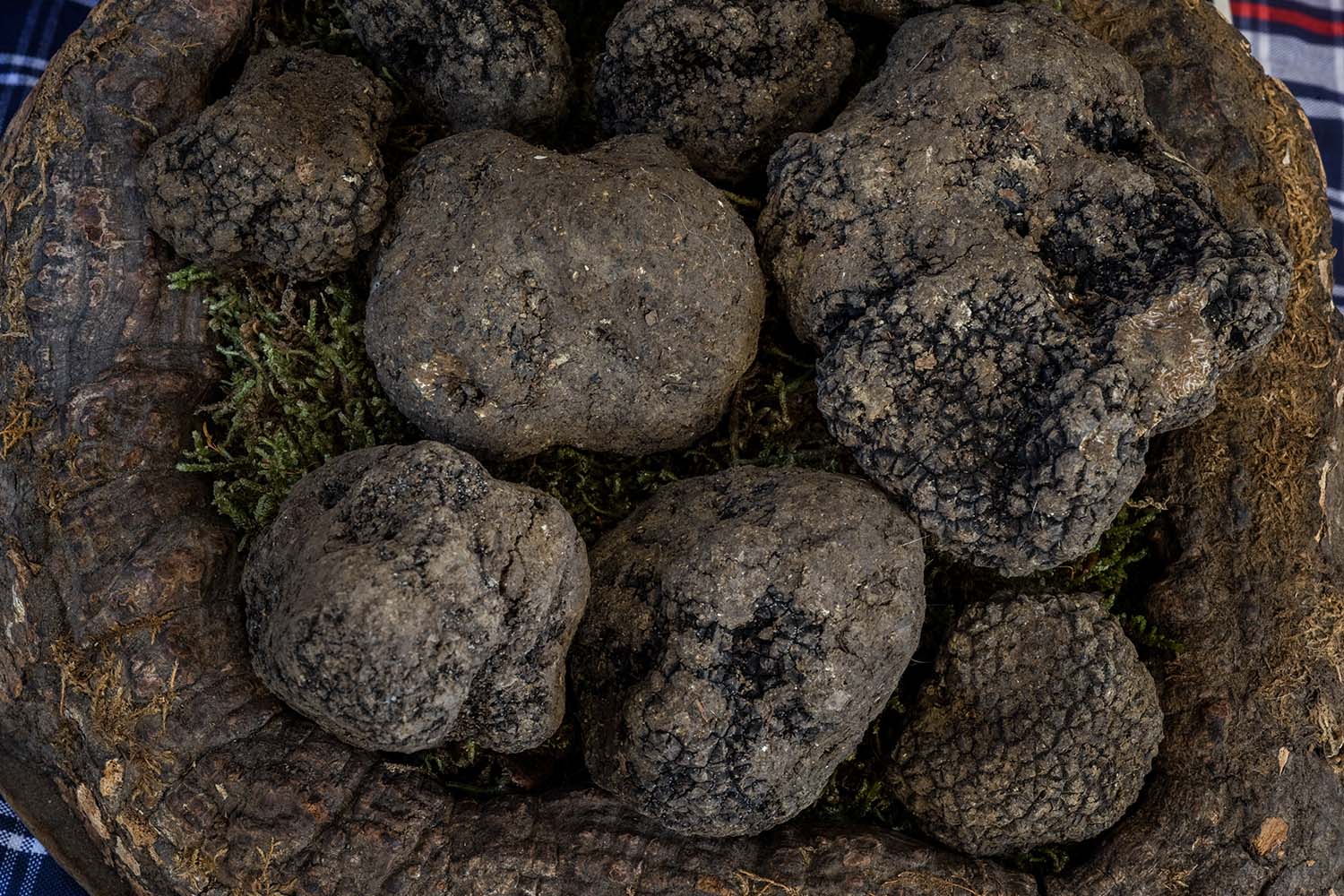
For those not in the know, truffles are tubers, or a type of fungus-like mushrooms that grow underground in forests.
Oftentimes shaved over fine pasta dishes and seafood or turned into a decadent truffle risotto or butter, foodies love them for their complex, earthy flavor that resembles umami or shallots. They’re prized because they’re hard to source, only grow in areas with a certain terroir (they do best in areas with warmer days and cool nights, meaning this area of northern Italy is prime for them) and lose their potency quickly after being harvested. These factors make them a delicacy, with hefty price tags in the thousands. Last year, for example, Stroppiana found a once-in-a-lifetime truffle — it was actually 15 white truffles attached together in one hole — that added up to 800 grams. He sold the truffle at $450 euros (about $490 U.S. dollars) per 100 grams. For their part, white truffles are generally more expensive than black truffles, due to their intense flavor and smell, shorter harvesting season and small growing area.
But unearthing truffles wouldn’t be possible without the help of truffle-hunting dogs like Bianca, a Lagotto Romagnolo, which are bred to hunt truffles. Pigs are sometimes used to hunt as well, but dogs are more commonly used today, as pigs tend to eat the truffles upon discovery, whereas dogs don’t have an affinity for them and are scent trained to find them. Bianca (along with Stroppiana’s three other truffle dogs) was scent trained from birth, having first smelled a truffle that was placed on her mother’s bosom as soon as she started nursing. As truffle puppies grow, their scent training continues, where rewards come from sniffing out truffles. In Bianca’s case: a dog treat for a black truffle and a bite of mouth-watering prosciutto for a white truffle.
A Veteran Truffle Hunter Shares the Story of His World-Record Find
In 1999, Giancarlo Zigante discovered the world’s largest truffle at the time. What he did with it was very unexpected.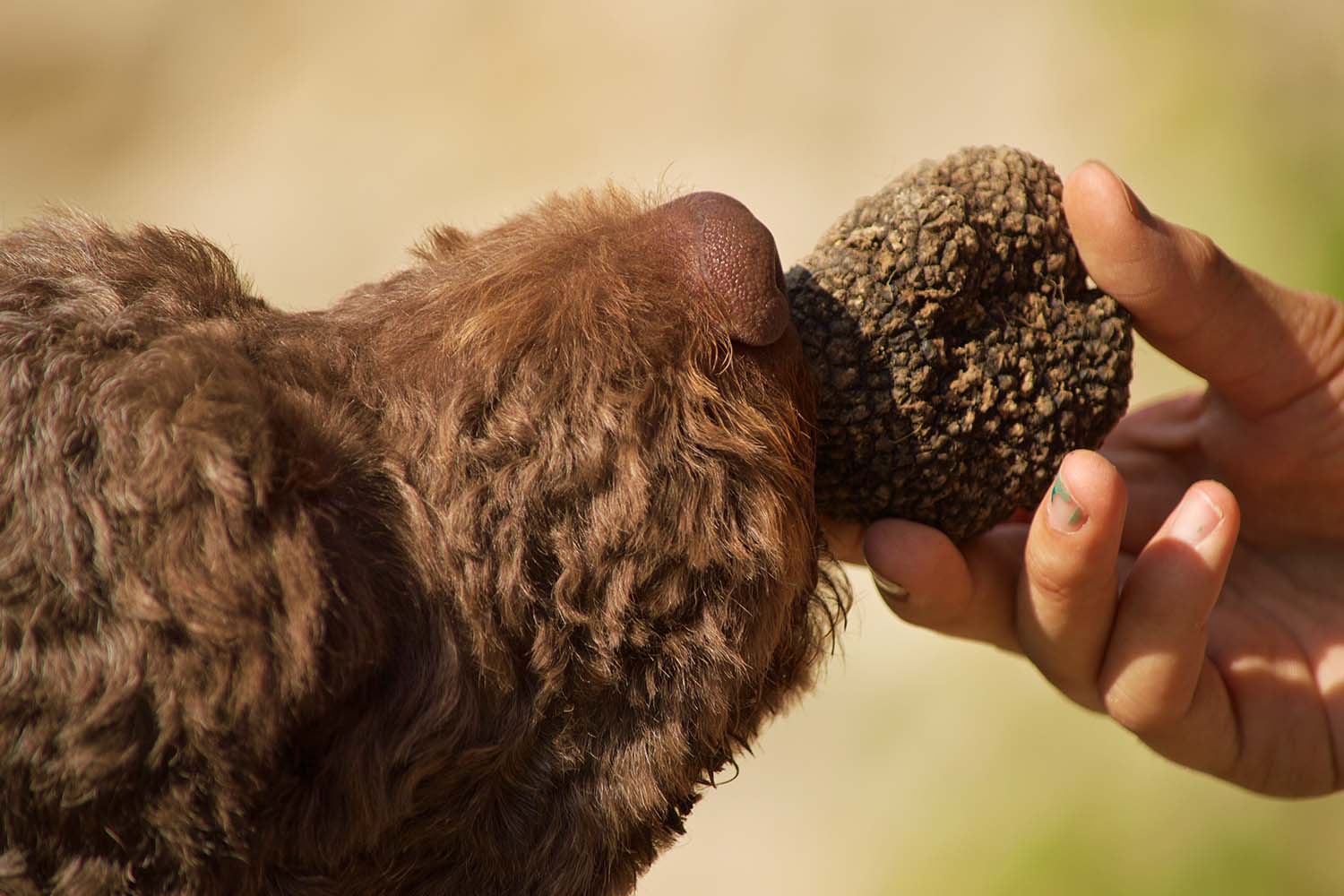
As expected, truffle hunting in this region of Italy is serious. Hunters don’t normally announce publicly where they’re finding truffles or how many, as they don’t want the competition to find their spots. “In our area, we have fewer woods now because trees are being cut to plant vineyards, which means truffles are disappearing,” says Stroppiana. “Just in the Piedmont area, there are 8,000 truffle hunters alone, so there’s a lot of competition.” There’s even been some horrific attempts to cut the competition even more, as some hunters have poisoned the ground in spots in hopes that a competitor’s truffle dog will take a whiff and die, leaving many hunters fearful of the worst and using a type of muzzle contraption over their dogs’ nose and mouth to protect them on hunts.
Here in these woods though, the competition is a bit less, as we’re on the grounds of Casa di Langa — an eco-friendly, luxe hotel surrounded by 100 acres of private forests and working vineyards. Only guests going out with Bianco Tartufi, Daniele and Marta Menegaldo’s truffle hunting company, are allowed to truffle hunt here as part of the hotel’s truffle hunting experience. And less competition here means more truffles to find, which is evident as Bianca runs from tree to tree, digging at roots and gnawing at branches in her way. I hike my way up steep hills and back down onto the forest floor after her, pushing small trees and branches out of the way as I watch in anticipation to see what comes up on each dig. Every time we see a small white or black dome appear in a hole Bianca digs, we cheer “Bravo, Bianca!” as Daniele fishes out a treat for her. In total, Bianca and Daniele find six truffles — four black and two white — on our hunt.
After emerging from the woods back at Casa di Langa, we say goodbye as Daniele loads Bianca into her car crate. He gifts us black truffles from the hunt, but keeps the white ones to sell. And while I’m sad the hunt is over (mostly because I don’t get to pet and cuddle Bianca anymore), I’m happy to taste our black truffle finds, shaved over a delicious pork loin at lunch.
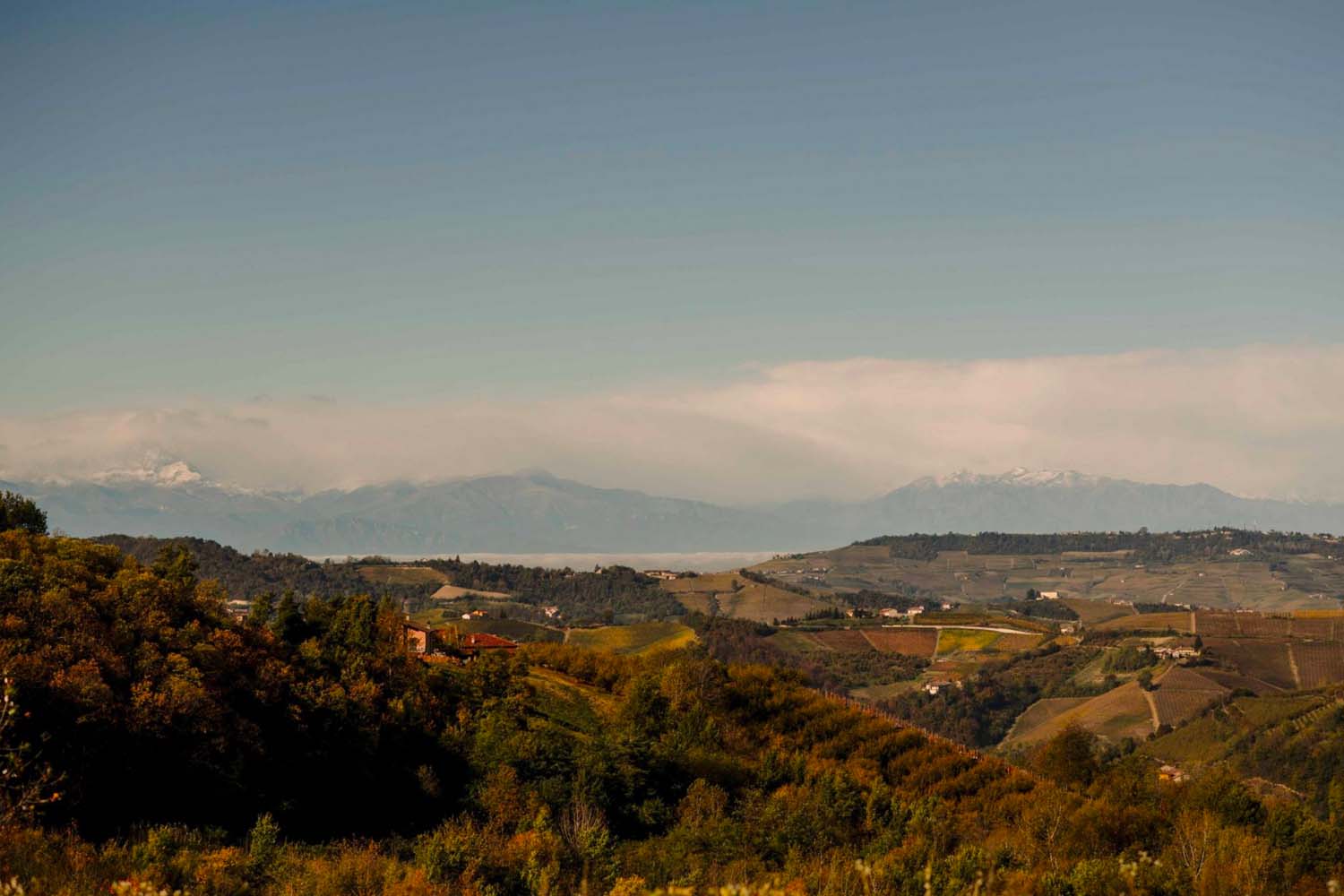
How You Can Do It:
Casa di Langa helps coordinate your truffle hunt with Daniele and/or Marta. Rain boots are provided for the experience, and you meet at reception for a short trek into the forest for the hunt. If you find black truffles on your hunt with Bianco Tartufi, you can keep them free of charge and the hotel restaurant, Fàula Ristorante, can shave them on a dish for a small service fee. For those rarer white truffles though, you’ll need to purchase them from the truffle hunter before they’re used in your meal.
Additional culinary opportunities here include cooking classes, where you can visit the on-site garden to forage for ingredients and perhaps persuade the chef to whip up something with your produce and truffle finds. Casa di Langa is a member of the Beyond Green hotel portfolio, which means it must adhere to over 50 sustainability indicators. The truffle forest here is protected and has been cleaned to protect the trees and encourage natural truffle production.
This article appeared in an InsideHook newsletter. Sign up for free to get more on travel, wellness, style, drinking, and culture.
